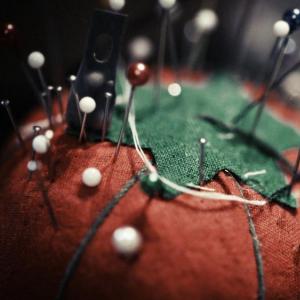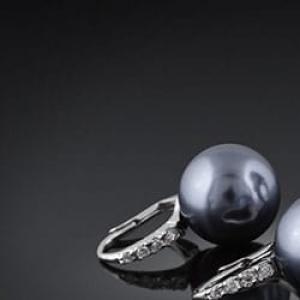Classic meringue for Easter. Easter cake decorated with multi-colored meringues. Glaze for Easter cakes with gelatin - how to make it so it doesn’t crumble
Lent is coming to an end, the Easter holiday is approaching. Housewives work tirelessly in the kitchen: painting eggs, kneading dough, preparing icing for Easter cake. On such a solemn and joyful day, everything should be at the highest level. But when it comes to icing, women’s opinions are divided: some prefer to cook it according to the “classic” recipe, others buy it ready-made in the store... What kind of icing is there for Easter cakes and how to prepare it? Let's try to figure it out.
Types of glaze for Easter cake
Cooking gives modern women there is room for imagination even in such a seemingly insignificant matter as preparing glaze. There are different recipes and methods. Glaze happens:
- “From a bag” - you can buy it in a store;
- Classic protein;
- Egg-free (lemon);
- From cocoa;
- Chocolate;
- Berry.
And many, many more different recipes, variations, ideas - there is room to roam.

The prepared mixture is sold in grocery stores and the confectionery departments of supermarkets. It's inexpensive, but one bag makes a lot of finished product - it's enough to coat the cakes all over, and there'll be some left over.
Preparing store-bought glaze is simple and quick. To prepare it you will need:
- Bag of purchased glaze powder – 1 piece;
- Egg white – 1 piece.
Cooking process:
- Beat the egg whites into a fluffy foam and begin gradually adding the contents of the bag.
- At the same time, do not stop whisking the mixture. It is most convenient to use a mixer (it is unlikely that you will be able to achieve the ideal consistency by hand).
- When the foam becomes fluffy and strong, like a meringue mixture, spread it onto the cakes (it hardens quite quickly) and leave for a few minutes.
- Once the frosting has set, sprinkle sprinkles, ground nuts or lemon zest on top.

Classic protein glaze recipe
This recipe for icing for Easter cake is one of the most beloved and used by modern housewives. It is quite simple and does not require much preparation.
Ingredients:
- Egg whites – 2 pieces;
- Sugar - 1 glass;
- A little salt.
Advice! Grind sugar into powdered sugar in a coffee grinder. This will significantly reduce the cooking time, and the glaze will be more fluffy and tender..
Cooking process:
- Cool the whites. You can put them in the refrigerator for half an hour.
- Mix the whites with salt and beat until a strong foam forms.
- Start gradually adding sugar (powdered sugar) and beat until it is completely dissolved in the egg mass.
- As a result, you should get a strong, thick foam. It needs to be carefully distributed over the tops of the Easter cakes and left to harden.
This recipe for Easter cake glaze is very similar to the previous one, but undoubtedly better, since all the ingredients are natural and beyond doubt.

Lemon sauce without eggs
Not everyone wants to take risks and eat raw eggs, and some cannot do this due to habits, attitudes or characteristics of the body. It is for such picky eaters, allergy sufferers and vegetarians that this recipe is intended. It is very simple: even a novice housewife can make lemon glaze for Easter cake.
Ingredients:
- Powdered sugar – 1-1.5 spoons;
- Lemon juice – 1 spoon.
Cooking process:
- Gradually mix the powder with lemon juice. It is better to add juice to the powder, and not vice versa.
- When the mixture becomes homogeneous, spread it evenly onto the cakes in a thin layer.
- You can immediately sprinkle the top with confectionery powder, as the lemon glaze hardens very quickly.

Homemade cocoa frosting
If you don’t yet know how to make “homemade chocolate” without chocolate, now is the time to learn. This glaze is suitable not only for decorating Easter cakes, but also for homemade cookies, pies, cakes and other baked goods.
Ingredients:
- Cocoa – 5 heaped spoons;
- Sugar – 0.5 cups;
- Milk – 5-6 spoons;
- Butter – 0.5 packs;
- Flour – 1 teaspoon.
Cooking process:
- To prepare the chocolate glaze, you will need a small saucepan. Mix sugar and cocoa in it.
- Slowly pour in the milk, remembering to stir the mixture so that no lumps appear. It is better to use a mixer for this, but you can get by with a regular whisk or spoon.
- When the mixture becomes more or less homogeneous, place the saucepan on low heat.
- When the milk boils, start adding butter to the mixture (it is better to cut it into cubes and add gradually). Don't forget to stir the glaze.
- At the end of cooking, add a little flour to thicken the mixture.
That's all! Homemade chocolate frosting without chocolate is ready. It should turn out homogeneous, shiny, fairly liquid and without lumps. Immediately apply it to the cakes. For faster hardening, baked goods can be placed in a cool place.
Advice! Experiment with proportions. You can reduce or increase the amount of cocoa and sugar in the recipe depending on your own preferences. Milk can be replaced with cream - this will give the glaze a richer creamy taste. You can also add a little coffee to the mixture.

Chocolate glaze
There are many variations of the recipe for chocolate icing for Easter cake. It is made from white and dark chocolate, adding butter, cocoa, nuts, coffee, honey and other ingredients that give the dish different shades of taste and color. Let's consider two of the most delicious recipes chocolate glaze, which you can easily prepare for the Easter holiday.
Chocolate glaze with condensed milk
Ingredients:
- Chocolate (dark or milk) – 1 package;
- Butter – 4 tablespoons;
- Condensed milk – 4 spoons.
Advice! Chocolate can be replaced with regular cocoa. You will need three spoons.
Cooking process:
- Melt the chocolate in a water bath (wait until it is completely melted and only then start stirring).
- Add butter to the melted chocolate and, without removing from the bath, stir until a homogeneous mixture is formed.
- If you decide to use cocoa instead of chocolate, first melt the butter and add cocoa powder to it.
- Add condensed milk into the resulting mass and stir again.
- Remove the mixture from the bath and put on fire.
- The glaze will be ready as soon as the first boiling bubbles appear on its surface.
Chocolate-nut glaze
You can decide for yourself whether to add nuts or not. If you don’t like this product, just cross it out of the recipe and do everything else as written.
Ingredients:
- Chocolate (white or dark) – 1 package;
- Cream – 125 ml;
- Nuts to taste.
Cooking process:
- Grind the nuts (if you decide to use them) into flour. Control the grinding degree to your own taste.
- Break the chocolate, put it in a saucepan and place in a water bath.
- Immediately add the cream and melt the mixture until smooth (until the chocolate is completely dissolved).
- Remove the mixture from the water bath and stir in the nut flour.
The topping for the Easter cake is ready! You can let it cool a little and thicken, and then apply it to Easter cakes or other baked goods. If you have ground nuts left over, you can decorate the top of the glazed cake with them or use a special sprinkle.

Berry glaze
But this is something new! Berry glaze is prepared extremely rarely, but its taste is not inferior to either chocolate or lemon.
You can make berry glaze from either frozen or fresh berries. You can also take a berry, pureed with sugar and “closed” in a jar, but then the amount of other ingredients will change.
Ingredients:
- Berry juice – 4 tablespoons;
- Powdered sugar – 1 cup;
- Warm water – 1 spoon.
Cooking process:
- Sift the powder through a fine sieve.
- Add juice and water into it.
- Mix thoroughly until a homogeneous mass is formed.
The berry drizzle is ready! Now you can grease Easter cakes and other baked goods with it, and decorate the top with berries, sprinkles or nuts.
Conclusion
If you can't decide what icing to decorate your Easter cakes with, don't hesitate. Prepare portioned cakes and brush them with different toppings. Let there be chocolate cakes, berry cakes, and, of course, the traditional cake with a protein top on the table. Your guests will definitely appreciate such variety.
I have been buying powdered sugar “Every Day” in AUCHAN stores for several years now. She helps me out a lot. We don’t have a coffee grinder, so we can’t make powdered sugar ourselves. And here, as they say: "just what the doctor ordered!"
Why I choose powdered sugar "Every Day":
- Affordable price
- Sufficient volume
- High quality product.
Price in the Auchan network: 27 rubles 10 kopecks.
Weight: 250 g.
Packaging and contents
Through a transparent window in a plastic bag you can evaluate the quality of grinding, color and appearance powders.
The package is securely sealed. There are no special notches on the packaging for ease of opening, so it is better to use scissors.
Since the package is quite dense, it holds its shape after opening. But it is better to pour unused powder into a glass jar.

Compound, as befits classic powdered sugar:
Crushed white beet sugar. May contain traces of egg powder, mustard powder, gluten and milk protein.
I don’t know what about the traces of milk protein, egg powder and gluten mentioned by the manufacturer... But I definitely didn’t find any mustard there.
The powder is snow-white, very soft and crumbly. The grind is fine, I didn’t come across any sugar crystals.

The sweetish smell and taste characteristic of sugar are present. Marvelous! Is not it?)))
In the next photo you can see small lumps. They probably appeared due to non-compliance with storage conditions, in particular, high humidity. This pack has been in my house for several months now. Lumps are easily broken up with a simple touch of a spoon.

Shelf life of powdered sugar: 18 months.
As I already said, powdered sugar "Every Day" helps me out a lot. For example, when you need to decorate freshly baked cupcakes or fruit pies. But this product is undoubtedly in greatest demand before Easter. What would a holiday be without Easter cakes in snow-white glaze?
I bring to your attention a product that has been proven over the years Easter cake recipe.
For several years now I have been baking the main Easter dish myself - I’m getting old. Of all the cakes I've ever tried, this recipe turned out to be the most delicious. Many years ago, my friend’s grandmother baked them, and now we do too. From the list of products given in the quote, it turns out a large number of Easter cakes. We usually divide the resulting dough in half. Then each of us gets on average 5 - 7 Easter cakes, depending on their size.
Easter cake recipe
- 6 eggs
- 2.5 cups sugar
- 200 g sour cream
- 1 pack of margarine
- 1 liter of milk
- 50 g yeast
- 3-4 kg flour(add as needed when kneading the dough).
Grind the eggs with sugar, add sour cream, margarine and a little warm milk. Mix everything with a small portion of flour.
Separately, dilute the yeast in warm milk. Add 3 tablespoons of sugar and a little flour. Stir and set aside. When the yeast starts to foam, pour it into the previously prepared products. Mix.
Add flour and knead the dough. The dough should not stick to your hands.
After kneading the dough, leave it in a large saucepan for 1.5-2 hours. This dough rises very well. It is necessary to knead it several times while lifting. Lovers of Easter cakes with raisins should insert the dried fruit carefully with wet hands.
Fill paper cake pans about 1/3 full. We wait for 1-1.5 hours until the dough rises, and put it in the oven for 40 minutes at a temperature of 180 degrees.


After the cakes are baked, take them out of the oven and cover with a towel. In the meantime, you can start preparing the glaze.
Classical glaze recipe for Easter cakes:
white of one large egg + 200 g of powder.
In my opinion, this amount of sugar is too much. Usually I take 2 medium egg whites and pour in a pack of powder (250 g). I beat with a mixer maximum speed within a few minutes. The glaze turns out very thick.

We grease the cooled Easter cakes with it and decorate them. Leave uncovered for a short time until the glaze hardens.

Hi all. Here is the long-awaited post about meringue. You will definitely like this recipe, because from three ingredients we will make incredible beauty. Moreover, we will use the finished product for two useful things at once. We will turn some of the meringue into meringue, and leave some for decorating the cakes.
In my last article, I already shared, and promised that I would make a separate post about icing and Easter cake decoration. There were a lot of questions on VKontakte about how I covered the cakes. I answer, I am extremely against raw protein; eggs must undergo at least some kind of heat treatment. But, this is purely my opinion.
So, how to make icing on Easter cakes at home, recipe with photos step by step.
If suddenly you still don’t have a kitchen scale at home, then take 50-60 grams of sugar for 1 protein. The breakdown is as follows: protein to sugar 1:2. If you have eggs of the first category, then the protein weighs on average 25 grams, if the egg is selected - 30 grams.
Ingredients.
- 100 g protein
- 200 g sugar
- teaspoon lemon juice (optional)
- gel coloring (if you want colorful frosting or meringue)
Preparation:
Immediately place a small saucepan of water on the stove. You need to pour a little water, so it will boil faster. We will cook our meringue in a steam bath. Steam - this means the bottom of the bowl with the protein mass should under no circumstances touch the water. To do this, it is better to take a smaller saucepan and a larger bowl.

In order for the protein to whip well, there are several rules. The bowl and whisks should be dry and grease-free. It is better to pre-wipe them with vinegar or lemon juice. By the way, plastic containers hold fat very well on their surface, so it is better to beat in a metal or glass container.

Mix protein and sugar. For this recipe, the size of the sugar grains is not important, since all the sugar will dissolve in the protein during heating in a steam bath. But if we made meringue without a bath, then we would have to use fine-crystalline sugar or completely replace it with powder.

As soon as the water in the saucepan boils, reduce the heat on the stove to medium and place our bowl on top of the saucepan.

With constant stirring, we need to bring our mass to a temperature of 65º. If you don’t have a thermometer, then in time it’s about 5-7 minutes on fire.

As soon as the protein mass has reached this temperature, remove the bowl from the heat and begin to beat the mixture with a mixer. I have a stationary mixer, so I poured the entire mass into the mixer bowl. Start beating immediately at high speed.

Halfway through beating, I literally added a teaspoon of lemon juice. Some confectioners also add a little cornstarch almost at the very end of whipping, for greater stability. In principle, I am satisfied with the result even without it.
Beat for about 5-7 minutes, until stiff peaks form. The mass will become shiny and smooth. If you turn the bowl over, the mass will not budge. There should be such a stable beak on the corolla. The whipping time depends on the power of your mixer; focus on peaks.

Next, if you want to color the meringue in different colors, then divide it and place it in different bowls. I added 2 drops of dye and gently mixed with a silicone spatula. I have our Russian dye - Top Decor. But, it is quite possible to do without dyes.

We transfer the meringue into a pastry bag with a nozzle and place roses or “domes” on a baking sheet lined with parchment; in principle, here you can play with the shape as you like. It is necessary to plant immediately, otherwise the meringue may seize.

These are the nozzles I have.

Place to dry in a preheated oven at 90° in convection mode for 2-3 hours, the time depends on the size of the meringue. The finished meringues should easily come away from the parchment.

If you want to make meringue on a stick, then there are 2 ways, either immediately place it on a stick, or insert a skewer 10 minutes after the start of baking. I always pipe the meringue straight onto the stick.

For those who have a gas oven or an electric oven that does not have such a low temperature, you will have to dry with the door ajar. First, try to make white meringue, without dyes. If it does not change its color by the end of drying, then you are doing everything right. If the meringue begins to darken, it means your oven is heating too much, you need to somehow reduce the heat.
I left some of the meringue for decorating the cake, just let it cool on top! I covered the cake with this cream using a spatula. The meringue holds its shape perfectly, you can create fancy patterns, curls on it, or you can simply cover it with an even cap on top.

And on top of the Easter cakes you can decorate them with our meringues, this is what you get in the end.

Very beautiful Easter cakes in soft colors. Meringue, by the way, is preserved very well on this cream. Just don't store it in the refrigerator.
And the meringue on the cake cap hardens within a few hours, it does not crumble and is very, very tasty. So I advise you to make a thicker layer of this glaze.
Bon appetit.
Kulich is a traditional Easter pastry. It is one of the symbols of the Resurrection of Christ.
If you decide to make your own Easter cake, you will need patience. Easter cake dough (necessarily yeast) contains a lot of eggs, sugar, butter or margarine. Easter cakes are decorated using glaze and various confectionery decorative elements. The team has selected a website for you especially for Easter best recipes glaze.
Prepare Easter cakes for your loved ones. They bring joy to your home and protect your family.
Protein glaze for Easter cake (Classic version)

Ingredients
Egg white - 1 chilled
Powdered sugar - 200-250 grams
Freshly squeezed lemon juice — 1-2 teaspoons
Cooking method
Beat the egg whites with a fork until light foam forms, add half of the prepared powdered sugar and mix.
Squeeze the lemon juice - this will give our glaze White color. Gradually add the remaining powdered sugar. The glaze should be thick enough so as not to drip off the cake and hold the shape and decorative elements of the decorations.
We cover our Easter cakes. The indicated proportions are enough to cover 2-4 Easter cakes.Try to decorate the cakes right away, as the glaze dries out quite quickly. Upon request, her can be tinted with food coloring.
Frosting without eggs for Easter cake

Ingredients
Powdered sugar - 1 glass
Lemon juice - 1 tablespoon
Cooking method
Pour the powder into a small bowl and gradually add lemon juice. Mix the glaze with the juice until smooth.
Immediately apply the prepared glaze to the slightly cooled cakes.
Chocolate glaze for Easter cake
Ingredients
Chocolate white or dark - 100g
Powdered sugar - 150 grams
Potato starch - 1 teaspoon
Butter - 50 grams
Cocoa powder - 4 tablespoons
Milk - 6-7 tablespoons
Cooking method
Mix the powder with milk and bring to a boil over low heat.
We put the chocolate bar and butter there. Stir the mixture until the chocolate is completely dissolved.
Now add starch and cocoa. Mix thoroughly until smooth and coat the cake with a little cooled glaze.
Coffee glaze for Easter cake

Ingredients
Sugar - 30 grams
Strong black coffee - 100g
Cooking method
Pour sugar into strong black coffee and place on low heat. We wait until the sugar is completely dissolved.
Now pour the mixture into a cup and whisk until it begins to harden. Now quickly grease the tops of the cakes.
Sugar icing for Easter cake

Ingredients
Powdered sugar - 1 glass
Warm water - 4 tablespoons
Cooking method
Mix the powder with water and put on fire. Stirring constantly, heat to about 40° C. If the mass is thick, you can add a little water, and if liquid, powdered sugar. Apply the glaze to the cakes immediately after cooking.
How to decorate Easter cakes? Most often, Easter eggs are decorated with meringue or white Easter icing, because it is elegant, light, bright, decorative sprinkles adhere well to it, and patterns with sugar pencils look beautiful.
You can buy Easter icing ready-made in bags: just add egg white and beat. But you can cook it yourself at home!
1. How to make meringue for Easter cake
Only yolks are needed in the Easter cake dough. But the proteins remain. They will come in handy for decorating beads!
Decorating the tops of Easter cakes with meringue is the simplest, classic way, the way our mothers and grandmothers did it.
Take 1-2 egg whites and, accordingly, 0.5 - 1 cup of sugar and beat with a whisk or mixer until fluffy, thick foam.
Brush the tops of the cakes with beaten egg whites and place in a hot oven for a few minutes to dry the meringue.
If you hold it a little, the meringue will be white and soft, if you hold it longer, it will become brittle and ruddy, but be careful not to dry out the beads themselves.
Of course, the eggs should only be the freshest! After all, the meringue undergoes very little heat treatment.
2. Prepare real Easter icing.
This method is basically similar to the first, but a little more complicated. We take:
- 1 egg white;
- half a glass of powdered sugar;
- on the tip of a teaspoon citric acid.
The store-bought glaze contains all these components, plus starch (thickener). I don’t know the proportions of adding it, but I think it’s possible without starch.
First, beat the egg white with a mixer, as for a sponge cake: first at low speed, then at medium and at high speed until a thick, strong foam forms.
Let the mixer rest for a minute. 🙂 Then slowly add powdered sugar, using teaspoons, while continuing to beat. You can use sugar, but if you want a glaze exactly like store-bought glaze, even, smooth, silky, without sugar, then powder is best!
At the end of whipping, when all the sugar has been added, add a little citric acid.
Immediately brush the tops of the cakes with the finished glaze.
3. Ready Easter glaze.

The easiest and most modern way is to buy a bag of ready-made glaze and beat it with a mixer with 1 egg white. We also beat it like a sponge cake: first at low speeds, gradually picking up speed.

Apply the glaze to the beads.


We wait 2-3 minutes, and only then sprinkle with sprinkles or draw with sugar pencils. Why not right away? Because the glaze is still wet and the paint will start to melt. But don’t miss the moment: the sprinkles won’t stick to the dried glaze.

Beautiful and delicious Easter cakes for you! 😀








